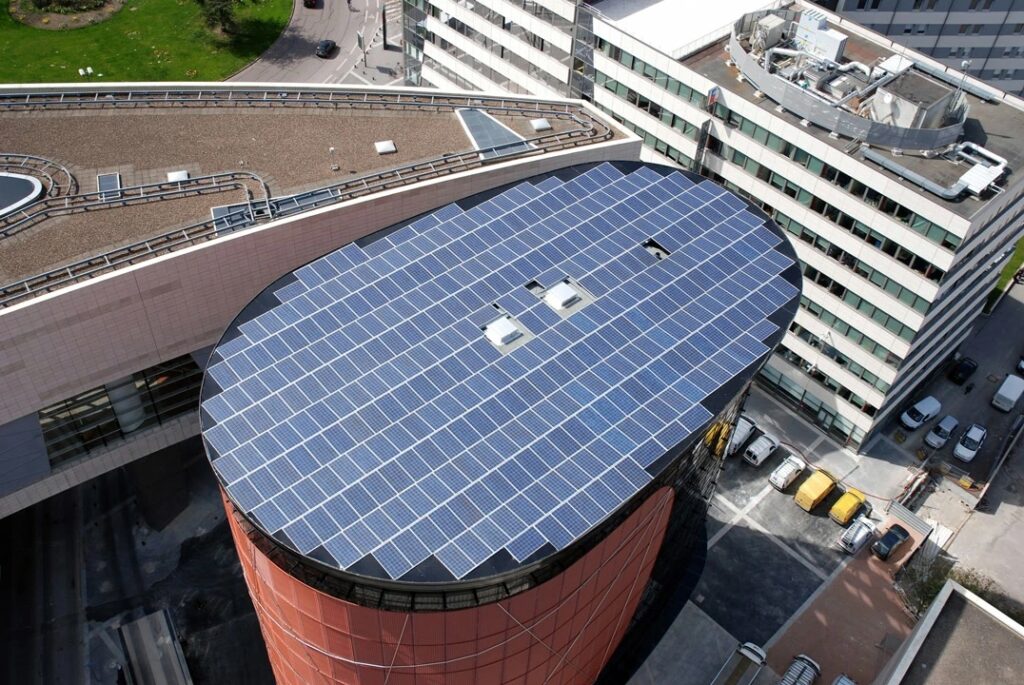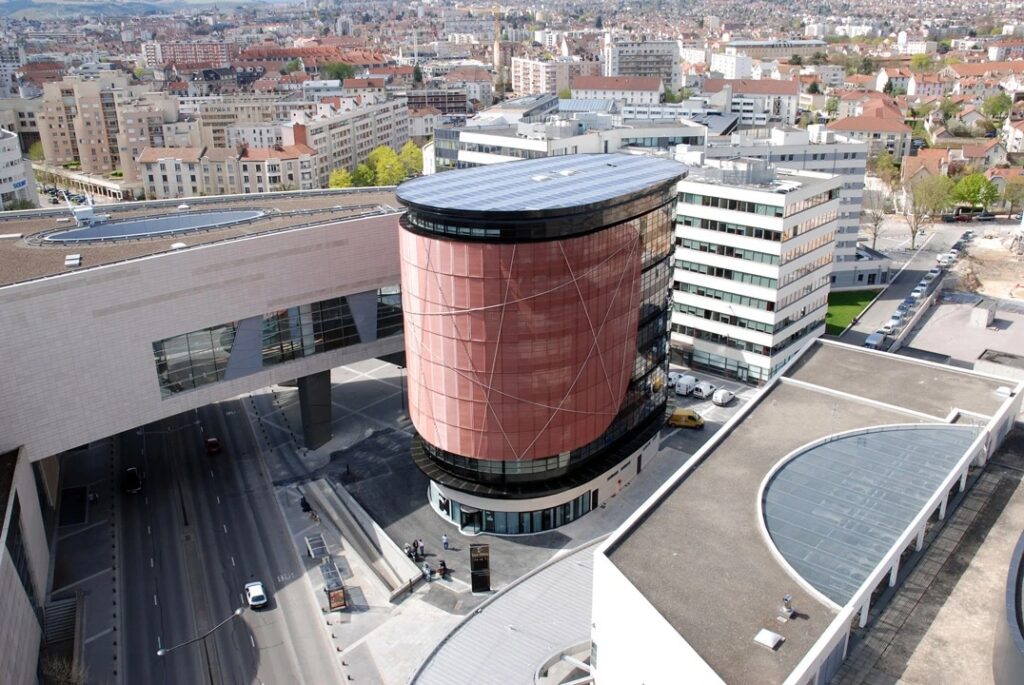The Elithis Tower in Dijon, France, is the headquarters of the Elithis Group, a building engineering consultant firm. Completed in March 2009, the facility was one of France’s first net zero buildings and is considered the world's first positive energy office tower developed at a standard cost of construction.
At just over 50,000 square feet of floor space, the Elithis Tower is composed of 10 floors, 9 dedicated office levels and one technical level for the building’s HVAC system. Four floors are occupied by Elithis Engineering, while other floors are occupied by ADEME (the French Environment and Energy Management Agency), a radiological services company, other civil engineering firms, and a restaurant.
In this research note, we explore the generation and efficiency technologies that enable the Elithis Tower to achieve carbon-positive status, while also considering the facility’s embodied carbon policies and the external factors that helped make this building possible.

Energy Generation for Net Zero Buildings
The Elithis Tower is able to generate approximately 112% of its energy needs through rooftop solar panels alone. A 560m² angled photovoltaic array covers almost every inch of the roof, creating a virtual penthouse power station for the 10-story tower that gives a very low ratio of installed PV area to the floor area.
The building actually only needs 500m² of solar panels to meet its own power needs, but the surplus of 60m² provides a dependable safety margin and any excess is sold to the grid, making the Elithis Tower carbon-positive since 2009. This could be considered quite remarkable as even recent green building projects struggle to achieve carbon positivity with more modern energy systems and additional forms of energy generation, such as wind or geothermal.
Data from the first 10 years of operation shows an energy use intensity (EUI), which is made up of kWh divided by meters squared divided by year, of 11 KWh on average. While an onsite renewable production intensity (RPI) of 36.8 KWh from solar alone, demonstrates a significant excess energy production driven by the building’s energy efficiency capabilities.
Energy Efficiency
The 14-year-old Elithis Tower consumes 10 to 15% less than a building that meets the highest current environmental requirements and, compared to a tertiary-sector building constructed in 2009, the Elithis Tower consumes as much as 40 to 50% less. The facility achieved this through a wide variety of energy efficiency technology and smart building systems. The building also produces six times fewer greenhouse gas emissions than traditional office structures.
The project’s energy efficiency achievements began with key architectural choices around the shape and orientation of the structure. The Elithis Tower is made up of two vertical cylindrical shapes that minimize surface area to reduce heat losses and solar gains, while also supporting environmental, economic, and urban planning criteria. The rounded shape also reduces exposure to wind and ensures ventilation is more homogeneous around the structure.
Thermal comfort, indoor air quality, and device-level energy use are being constantly monitored with 1600 data points installed all over the building. In addition, regular occupant surveys are conducted to assess the success of comfort measures and drive optimization as a balance of human comfort and energy consumption.
Over 75% of the exterior surface of the tower is glazed but made transparent enough to provide panoramic views and abundant natural light to the office occupants. The south-facing exterior wall is covered by a red thermal shield that blocks harsh solar radiation while still allowing enough natural light to support occupant comfort and focus. The Elithis Tower was also designed to be open plan to support daylighting, ventilation, and collaboration.
Where and when natural light is limited, sensor-enabled light fixtures in the ceiling provide the average French lighting standards (300 lux) over the entire office space. Installed lighting power is only about 2 W/m² of electrical energy and for tasks requiring a higher level of illumination, task lighting, the building employs “Nomadic lamps” controlled by the BEM system.
The energy management system maintains 1600 data points to allow the control and the management of all technical systems (HVAC, lighting, elevators). While the multitude of energy meters are installed across the building make it possible to optimize energy use at the system and component level.

Embodied Carbon
For a building constructed in 2009, the Elithis Tower is surprisingly well represented within the embodied carbon discussion. Its foundation is a concrete structure consisting of a central core and a concrete slab with additional metal poles, but the building envelope is dominated by a wooden frame that runs around the entire structure.
All insulation across the facility is made from recyclable material, primarily cellulose wadding. There is also a rainwater recovery system on the roof to supply the sanitary facilities of the offices, and all savings are displayed on an information totem displaying the savings achieved in tons of CO2 to validate and correct the models.
Net Zero Buildings Environment
At a cost of 7 million euros ($7.4 million), the carbon-positive Elithis Tower was constructed at a rate of 1400€ per m², within the standard range for buildings in France at the time. Financing for the project was provided by ADEME (the French Energy Dept.), who is now a tenant in the building, and the Regional Council of Bourgogne.
For the regional council, in 2009, the building represented an opportunity to put Dijon on the map as the environmental movement gathered pace. Sandwiched between the city's opera house and a prominent hotel in the center of the city, the Elithis Tower quickly became an iconic feature of the Dijon skyline. Described by then Mayor of Dijon, François Rebsamen, as “an aesthetic achievement with a perfect architecture that is respectful of the environment.”
To achieve the net zero buildings design 14 years ago, Elithis Engineering sought out young architects and made a point to encourage all of its employees, including construction workers, to be actively involved in the project’s development. Founded on a platform of this building, the company has gone on to become a specialist in low-carbon building design and construction.
"Elithis has given itself the vocation to make positive energy accessible to all by responding to the great stakes of the 21st century, such as the energy crisis, the global warming or the energy precariousness,” says Thierry Bièvre, President and Founder of Elithis. “As a building engineering consultant, Elithis has also become a builder by transforming its gray matter into virtuous real estate projects, and is anchored in the French and European real estate landscape for the benefit of the current and future generations.”



